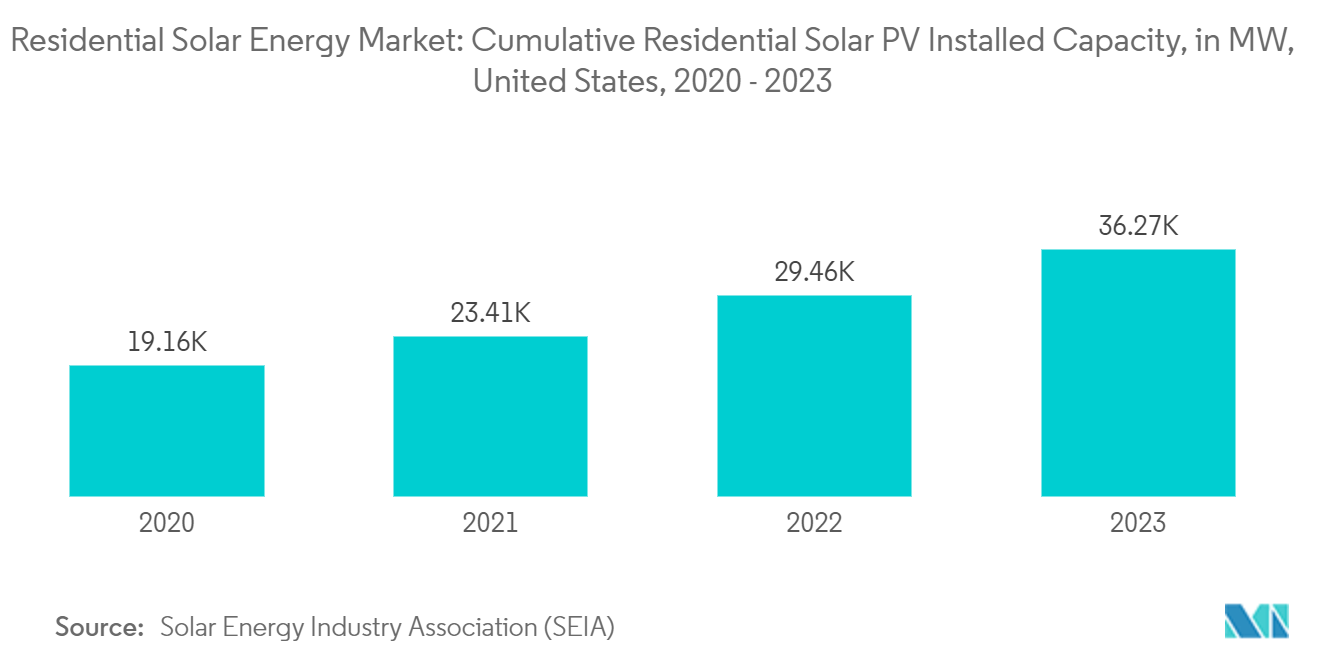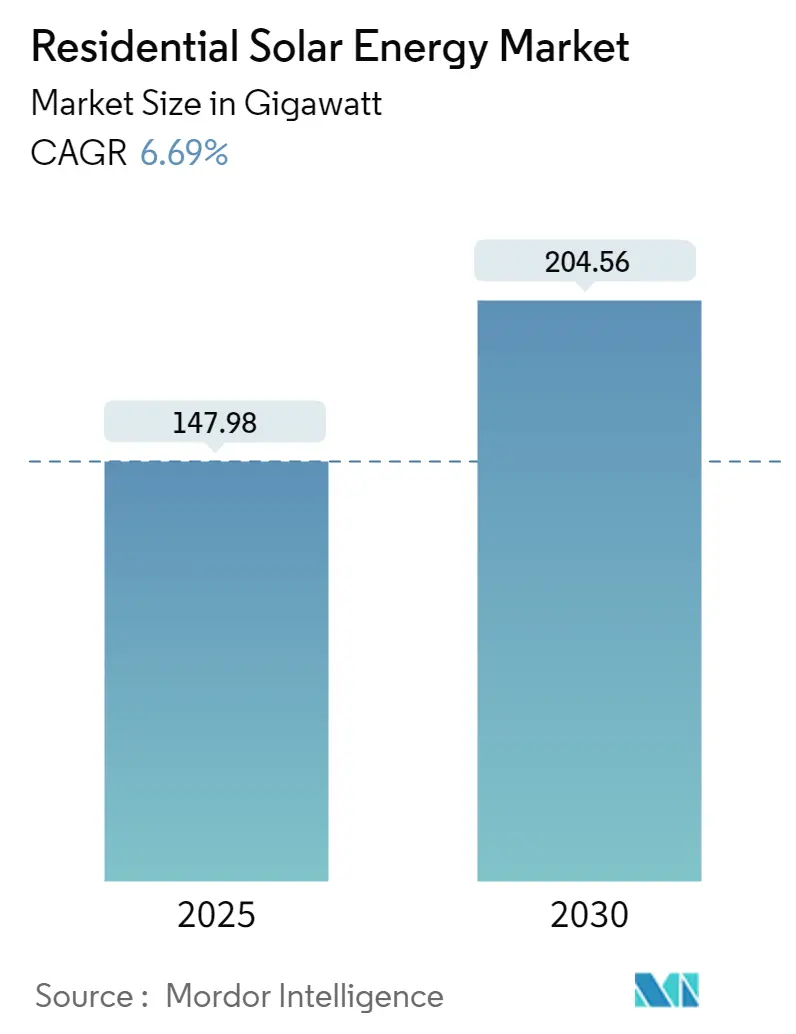
| Study Period | 2019 - 2030 |
| Market Volume (2025) | 147.98 gigawatt |
| Market Volume (2030) | 204.56 gigawatt |
| CAGR | 6.69 % |
| Fastest Growing Market | Asia Pacific |
| Largest Market | Asia Pacific |
| Market Concentration | High |
Major Players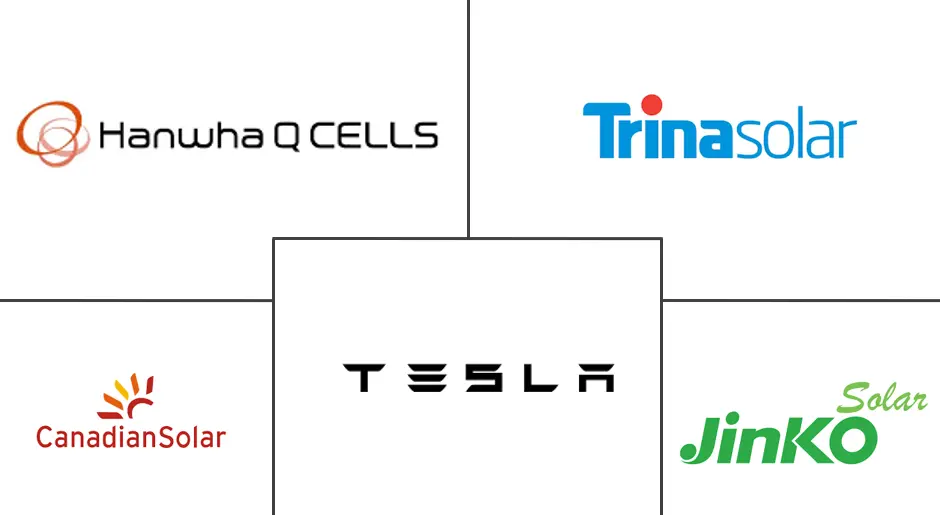
*Disclaimer: Major Players sorted in no particular order |
Residential Solar Energy Market Analysis
The Residential Solar Energy Market size is estimated at 147.98 gigawatt in 2025, and is expected to reach 204.56 gigawatt by 2030, at a CAGR of 6.69% during the forecast period (2025-2030).
- Over the medium term, factors such as favorable government policies, increasing investments in upcoming rooftop solar projects, and the reduced cost of solar energy, which has led to increased adoption of solar energy, are expected to drive the market during the forecast period.
- On the other hand, the lack of financing options and the difficulties in integrating residential solar PV systems in regions like Africa are expected to restrain the market's growth.
- However, ambitious targets are being undertaken to increase the renewable share in their energy mix. Governments across these nations also plan to increase the renewable energy share by deploying residential solar PV systems in the coming years. This factor, in turn, is expected to act as an opportunity for residential solar energy manufacturers and suppliers during the forecast period.
- Asia-Pacific is expected to be the fastest-growing market during the forecast period due to the rising energy demand. This growth is attributed to increasing investments and supportive government policies in Asia-Pacific countries, including India, China, and Australia.
Residential Solar Energy Market Trends
Increasing Rooftop Solar Installations to Drive the Market
- The increasing adoption of solar PV systems in the residential sector is primarily driven by expected savings in electricity costs, the need for an alternative source of electricity, and the desire to mitigate climate change risk.
- During the forecast period, the demand for rooftop solar PV is expected to increase due to decreasing solar PV costs, supportive government policies for residential solar PV, FIT programs and incentives, and various solar energy targets.
- The cost of electricity for residential rooftop solar PV applications has rapidly declined in recent years. The falling price has resulted in a massive increase in the global residential PV capacity, and many countries are increasing their residential rooftop targets.
- The Solar Energy Industry Association (SEIA) statistics show that, in 2023, the cumulative residential solar PV installed capacity in the United States accounted for about 36.268 GW. The total installed capacity grew by 23% compared to the previous year. The hike in capacity is mainly due to high household electricity bills and power outages.
- A European Joint Research Centre analysis shows that EU rooftop PV could produce 680 TWh of solar electricity annually.
- In April 2024, the German parliament approved a new series of measures to support solar PV development in the country. Rooftop solar PV installations of 40 kW are made eligible for feed-in tariffs that will be EUR 1.5c/kWh higher than current tariff levels. In addition, the new law increases the limit for ground-mounted solar projects from 20 MW to 50 MW in tenders for large-scale installations. Finally, it will become easier for households to deploy PV balcony systems and smart energy communities.
- All such factors are expected to drive the demand for residential solar energy over the forecast period.
Asia-Pacific to Dominate the Market
- Asia-Pacific accounted for more than 30% of the global residential solar PV market. It is expected to continue its dominance during the forecast period.
- India's solar PV installed capacity increased significantly from 63.048 GW in 2022 to 72.767 GW in 2023, and the demand for power is expected to increase further in the coming years.
- To cater to the rising power demand and meet its renewable energy target of 500 GW by 2030, the Indian government plans to increase the installed capacity of rooftop solar energy in the residential sector to around 4 GW by 2026. Thus, the government has initiated various policies for the residential sector to adopt solar energy to achieve the target.
- The Ministry of New and Renewable Energy (MNRE)’s grid-connected rooftop solar program aims to offer a 40% subsidy for the first 3 kW of generation capacity in rooftop systems and a 20% subsidy up to a 10 kW ceiling.
- Apart from schemes, the rooftop solar energy market for the residential sector seems appealing in India due to its increasing electricity tariff. On average, the electricity tariff in India is around INR 6-9 per unit, which is likely to increase due to a rise in electricity demand. In H1 2023, Indian states like Assam, Karnataka, Maharashtra, and Tamil Nadu raised their tariff for residential users. Hence, people are likely to adopt rooftop solar PV systems in their homes to reduce or make zero electricity bills.
- At the end of 2023, the Chinese government proposed to cover 50% of rooftop space with solar panels on party and government buildings, 40% of schools, hospitals, and other public facilities, 30% of industrial and commercial areas, and 20% of rural households. A total of 676 counties from 31 provinces have registered for the scheme.
- Owing to such factors, the demand for residential solar energy is expected to increase in Asia-Pacific over the forecast period.
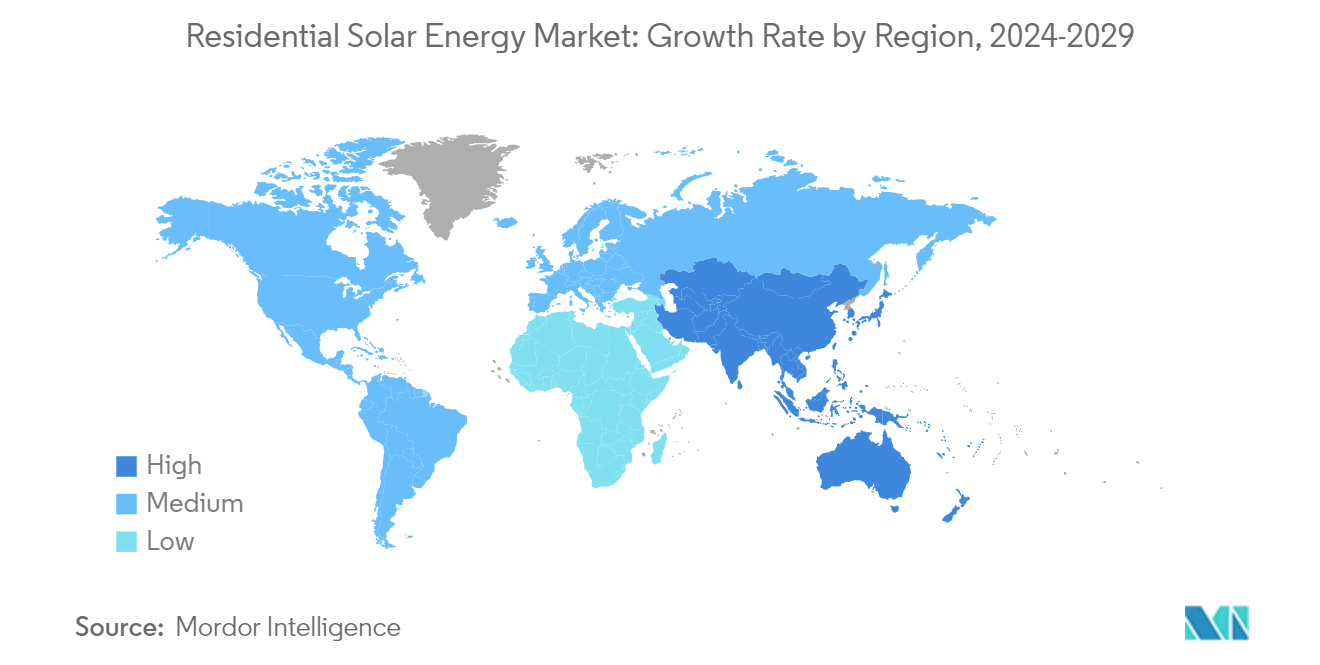
Residential Solar Energy Industry Overview
The residential solar energy market is fragmented. Some of the major players in the market (in no particular order) include Trina Solar Co. Ltd, Canadian Solar Inc., JinkoSolar Holding Co. Ltd, Hanwha Q Cells Co. Ltd, and Tesla Inc.
Residential Solar Energy Market Leaders
-
Trina Solar Co., Ltd.
-
Canadian Solar Inc.
-
Hanwha Q Cells Co., Ltd.
-
Tesla, Inc.
-
JinkoSolar Holding Co., Ltd
- *Disclaimer: Major Players sorted in no particular order
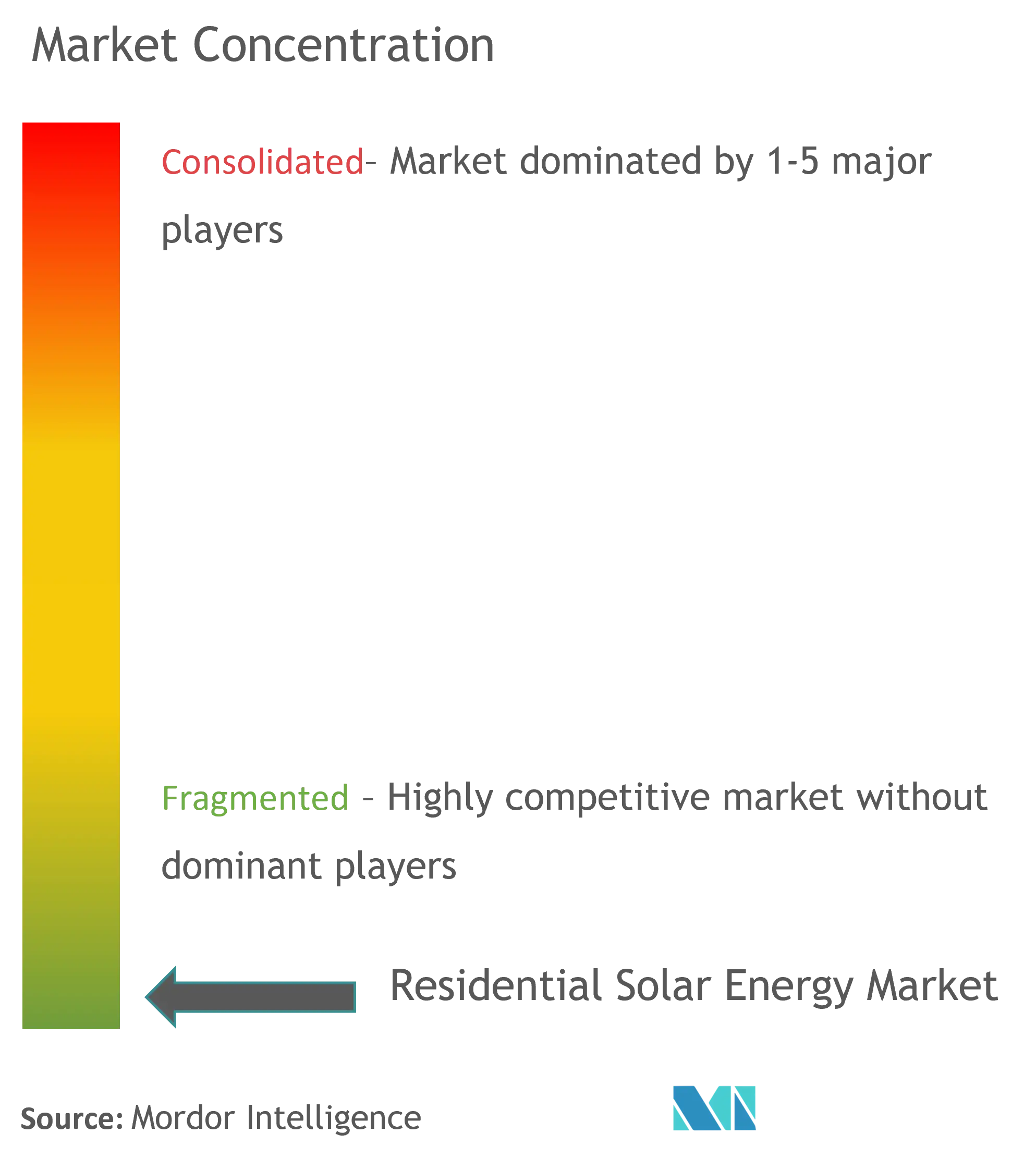
Residential Solar Energy Market News
- April 2024: The German government released a new rooftop solar tender seeking 258MW of PV capacity. The maximum bid price is expected to be EUR 0.105/kWh (USD 0.113/kWh).
- February 2024: The Indian government approved a USD 9 billion plan to add solar panels to 10 million homes, boosting a laggard industry in the country's transition efforts.
- March 2023: North Carolina regulators issued an order to strengthen the state’s solar market by approving a three-year glide path for solar customers to transition from monthly credits to a more dynamic time-of-use rate structure that incentivizes the use of solar when it is most valuable.
Residential Solar Energy Industry Segmentation
Residential solar PV consists of photovoltaic cells and is nonchemical technology that turns sunlight into energy to power household appliances and equipment. It is a rapidly growing renewable energy technology and plays a vital role in global energy transformation.
The residential solar energy market is segmented by geography. The report also covers the market size and forecasts across major regions. For each segment, the market sizing and forecasts have been done based on installed capacity (GW).
| North America | United States |
| Canada | |
| Rest of North America | |
| Europe | Germany |
| France | |
| United Kingdom | |
| Italy | |
| Spain | |
| Russia | |
| NORDIC | |
| Turkey | |
| Rest of Europe | |
| Asia-Pacific | China |
| India | |
| Japan | |
| Australia | |
| Malaysia | |
| Thailand | |
| Indonesia | |
| Vietnam | |
| Rest of Asia-Pacific | |
| South America | Brazil |
| Argentina | |
| Chile | |
| Colombia | |
| Rest of South America | |
| Middle East and Africa | Saudi Arabia |
| United Arab Emirates | |
| South Africa | |
| Qatar | |
| Nigeria | |
| Egypt | |
| Rest of Middle East and Africa |
Residential Solar Energy Market Research FAQs
How big is the Residential Solar Energy Market?
The Residential Solar Energy Market size is expected to reach 147.98 gigawatt in 2025 and grow at a CAGR of 6.69% to reach 204.56 gigawatt by 2030.
What is the current Residential Solar Energy Market size?
In 2025, the Residential Solar Energy Market size is expected to reach 147.98 gigawatt.
Who are the key players in Residential Solar Energy Market?
Trina Solar Co., Ltd., Canadian Solar Inc., Hanwha Q Cells Co., Ltd., Tesla, Inc. and JinkoSolar Holding Co., Ltd are the major companies operating in the Residential Solar Energy Market.
Which is the fastest growing region in Residential Solar Energy Market?
Asia Pacific is estimated to grow at the highest CAGR over the forecast period (2025-2030).
Which region has the biggest share in Residential Solar Energy Market?
In 2025, the Asia Pacific accounts for the largest market share in Residential Solar Energy Market.
What years does this Residential Solar Energy Market cover, and what was the market size in 2024?
In 2024, the Residential Solar Energy Market size was estimated at 138.08 gigawatt. The report covers the Residential Solar Energy Market historical market size for years: 2019, 2020, 2021, 2022, 2023 and 2024. The report also forecasts the Residential Solar Energy Market size for years: 2025, 2026, 2027, 2028, 2029 and 2030.
Our Best Selling Reports
Residential Solar Energy Industry Report
The global market for residential solar energy storage systems and residential solar PV is on a trajectory of robust growth, driven by an escalating demand for clean and renewable energy sources within residential settings. This market, meticulously segmented by application, product type, connectivity, and mounting, caters to a broad spectrum of residential needs, spanning collective and detached houses, and providing both on-grid and off-grid solutions. Key product categories include lead-acid and Li-ion batteries for energy storage, as well as ground-mounted and rooftop solar PV installations. The residential solar market size is poised for growth across various regions, with Asia-Pacific particularly notable for its favorable policies and surging energy demand. This movement is propelled by the allure of potential electricity cost savings, the quest for alternative electricity sources, and the imperative to mitigate climate change risks. Ambitious renewable energy targets set by governments worldwide are further catalyzing the market's growth, with the aim of boosting the residential solar market share through the widespread adoption of solar PV systems. For comprehensive insights into the Residential Solar Energy market share, size, and revenue growth rate, Mordor Intelligence™ Industry Reports offer a detailed market forecast outlook and historical overview. Access a sample of this industry analysis as a free report PDF download.



